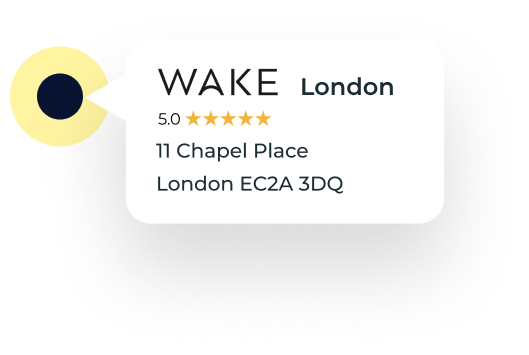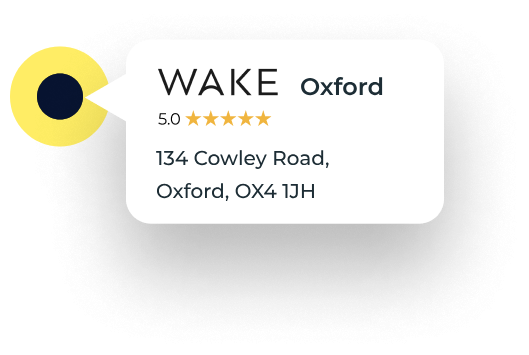Maintain Great Sales Velocity With a Winning Buy Box Strategy
If you’ve spent even a little time researching Amazon growth, you’ve probably come across references to “the Buy Box” and the importance of having it. If you’re left wondering what the Buy Box is, what’s so important about it, or any other questions, then you certainly wouldn’t be the first!
The Amazon Buy Box is a crucial, and often misunderstood concept you’ll need to familiarise yourself with when you’re growing a brand on Amazon. In this guide, we’ll demystify what the buy box is, how it’s awarded to product listings, and the practical steps you can take to win and keep the Buy Box.
What is the Amazon Buy Box?
The Amazon Buy Box, (now officially named the Featured Offer), is the box found to the right of product listings, containing the product’s price, delivery information, and two buttons labelled “Add to Basket” and “Buy Now”. More than 80% of sales on Amazon occur through the Buy Box, so winning it for as many ASINs as possible is crucial for your success as a Vendor.
Where multiple Amazon Seller or Vendor accounts are selling the same product, the Amazon Buy Box will only be awarded to one of these listings. This is determined by an algorithm set up by Amazon, which designates the Buy Box winner as the default choice out of all the listings selling the same product on the site. Because of this, the vast majority of Amazon purchases are made using Buy Box buttons.
If your distribution is tightly controlled and you’re the only brand selling a particular product on Amazon, then your listing for this product should be the only one with the Buy Box. However, if there are third-party (3P) sellers on Amazon also offering your products, you could be at risk of losing the Buy Box. This means you’ll need to take a more proactive approach to ensure you can win it back and maintain it.
How the Amazon Buy Box Works
Amazon uses an algorithm to determine which listings for a given product display the Buy Box, aimed at efficiently connecting their users with the product they’re looking for. When you’re looking at how to win the buy box on Amazon, you’ll first need to understand how this algorithm works. Though some will say winning the Buy Box is all about having the lowest-priced product, and price certainly comes into it, there are a few more variables it’s important to consider.
Though Amazon hasn’t revealed how the Buy Box algorithm works publicly, they have specified certain influencing factors you’ll need to bear in mind when winning the Buy Box:
Price: Competitive pricing, though not the only factor in who gets the Buy Box, can significantly increase your chances of winning and maintaining it.
Shipping: Having logistics that can get your stock into Amazon Fulfillment Centres quickly and easily will support a positive customer experience, and make you more likely to hold the buy box.
Vendor Rating: A stronger rating accumulated from your customer reviews and feedback can improve Amazon’s trust in your brand and increase your Buy Box eligibility.
Order Returns: Minimising the risk of any defects or other issues that could increase the rate of returns will also improve the shopper experience, and help your chances of winning the Buy Box.
Stock Levels: Ensuring all of your ASINs are consistently available to buy will encourage Amazon to make ordering easier by awarding your listings the Buy Box.
Finding the Amazon Buy Box elusive? Our Vendor+ channel management service will optimise every aspect of your Vendor Central profitability, including making sure your ASINs win and keep the Buy Box. Find out more
How to Win the Buy Box on Amazon for Vendors

With the large majority of sales on Amazon coming through listings with the Buy Box, having a strategic approach to this variable is essential for any Vendor who wants to maximise the potential of Amazon as a channel.
Here are some essential strategies to apply whenever you’re working to secure the Buy Box for your ASINs.
Streamline Your Inventory Management
Product availability for Amazon shoppers is one of the biggest deciding factors when it comes to winning the Buy Box on Amazon. If your products are regularly out of stock for too long a period, your listings could be removed from the platform completely, regardless of how well they’re performing or how competitive your pricing is.
Make sure you have a robust inventory management strategy in place, focused on accurate demand forecasting to avoid both stockouts, which can hurt your sales velocity, and overstocking, which can lead to higher storage costs, and hurt your ASINs’ profitability.
Advanced predictive analytics tools, or partnering with an Amazon channel management specialist, can help you plan for seasonal shifts, spikes caused by planned promotions, and sudden shifts in demand caused by macroeconomic factors.
Optimise Your Amazon Pricing Structure
A big part of Amazon’s success is owed to its commitment to competitive pricing, and part of how they achieve this is awarding the Buy Box to listings that have the lowest price. However, driving your prices too low does carry some risk.
If your products’ price gets too low, your ASINs could end up on the cleverly-named CRaP (Can’t Realise any Profits) list, which Amazon uses to categorise items which aren’t profitable to sell. Getting onto this list typically means losing the Buy Box.
To guard against your products ending up on the CRaP list and losing the Buy Box, it’s important to find ways to lower your prices strategically, while still keeping your standard product prices worthwhile to Amazon’s business model.
Favouring temporary promotions over permanent price cuts, creating Amazon-exclusive SKUs, and creating bundles and bulk packs can all be effective ways to achieve this. While implementing these strategies, you can also implement a minimum advertising policy to protect against 3P sellers swiping the Buy Box through undercutting your prices. This brings us onto our next point…
Enforce an Minimum Advertising Policy (MAP)
Having a minimum advertising policy that third-party sellers must agree to is another effective strategy for maintaining the Buy Box, helping you prevent 3P parties from undercutting your prices and capturing the Buy Box for your products.
With an MAP enforced, your products will maintain a more consistent price point across all listings, signalling greater reliability to Amazon’s algorithm and improving your chances of winning the Buy Box.
Bear in mind that Amazon won’t enforce MAPs themselves, and you’ll need to support this strategy with your own proactive monitoring of 3P sellers. If you come across any unauthorised listings, and you’ve already proven that you’re the trademark owner through Amazon Brand Registry, you can flag it with Amazon using the “Report a Violation” tool in the Brand Registry dashboard. Applying for Brand Gating can also help to prevent this by permanently restricting who can sell your items on the platform.
Keep an Eye on Operational Performance Metrics
Amazon looks at a specific set of KPIs to monitor how effectively you’re fulfilling orders as a vendor, and determine your listings’ Buy Box eligibility. Some of the most important metrics in this area include:
- Order defect rate
- Late shipment rate
- Cancellation rate
Keeping your order defect rate as low as possible, ideally under 1%, is crucial to winning the Buy Box in the long term. This metric is calculated from customer complaints, vendor chargebacks, A-to-Z guarantee refund claims, and other negative signals.
Just like a high ODR, cancelling agreed orders or shipping late can damage your credibility and hurt your chances of winning the buy box, even if your pricing strategy is optimal.
To make sure your performance is conducive to getting the Buy Box, it’s crucial to monitor these KPIs closely, understand the variables within your control that affect them, and ensure they’re meeting Amazon’s exacting standards.
Optimise Your Supply Chain for Amazon Margins
The pricing and fees set out in your vendor agreements can put you at a disadvantage when it comes to competing with 3P sellers and retaining the Buy Box.
Third-party sellers have to pay a flat referral fee ranging from 7 to 45% of the sale price depending on the product category, with additional costs if they’re using FBA. Vendors, on the other hand, have their fees negotiated on a case-by-case basis. This means Amazon could potentially see a better margin from 3P listings, and award those listings the Buy Box instead of the actual brand.
To maximise the chances of winning and keeping the Buy Box, it’s crucial to optimise your supply chain costs with Amazon margins in mind. Supply chain efficiency programs like direct import, full truckload, and full pallet ordering can all support Amazon receiving your products at a reduced cost. The savings you make by optimising your Amazon supply chain can then be rebated back to Amazon, or used as leverage to help you negotiate more favourable fees.
By getting your products to Amazon cheaply and keeping your pricing competitive, you’ll both reduce the cost of your Amazon operation, and protect your Buy Box ownership for stronger sales.
Struggling to understand the Buy Box? Our full channel management services are tailored to achieving your brand’s unique goals through sales growth, efficiency, and profit optimisation, ensuring you never have to worry about 3P sellers encroaching on your brand.
Amazon Buy Box FAQs
Winning the Buy Box on Amazon is an essential pillar to controlling your brand and maximising your sales as a vendor. Though understanding the different variables that affect the Buy Box can be a challenge, taking a careful, strategic approach to managing these factors will help you gain total brand ownership and give you one less thing to worry about as you focus on maximising your sales.
We’ll wrap this guide up with some common questions about the Buy Box we often hear from our clients. For more support with brand ownership and sales optimisation, be sure to check out our other blog posts, or read about how our Vendor+ channel management service can help maintain your brand integrity.
Can more than one seller win the Buy Box for the same product?
No – only one seller or vendor can hold the Buy Box for a given product at any one time. If multiple sellers are offering the same product, Amazon’s algorithm chooses one listing to be the default purchase option, based on various performance and price factors.
How does Amazon decide who gets the Buy Box?
Amazon uses a proprietary algorithm to decide which listing gets the Buy Box. While pricing always plays a big role, it’s not the only factor. Amazon also looks at your stock levels, delivery speed, customer feedback, order defect rate, and other metrics to assess which seller or vendor will provide the best experience for its customers.
I’m the only one selling my brand’s products. Can I still lose the Buy Box?
While rare, it is possible to lose the Buy Box as the only account selling your branded products. Even if you own the only listing, you could lose the Buy Box due to poor performance metrics, uncompetitive pricing, or if Amazon deems your product unprofitable (for example, if it lands on their CRaP list). Maintaining strong operational performance and pricing strategy is essential to avoid this.
What is a Minimum Advertising Policy, and how does it help?
A Minimum Advertising Policy (MAP) sets a floor price that third-party sellers agree not to undercut. This helps maintain consistent pricing across listings and reduces the risk of 3P sellers stealing the Buy Box by lowering their prices unsustainably. Remember you’ll need to monitor for compliance yourself, as Amazon won’t enforce MAPs on your behalf.
Can I do anything about unauthorised 3P sellers?
Yes. If you’re enrolled in Amazon’s Brand Registry and you find 3P sellers violating your policies or selling without permission, you can report them using the “Report a Violation” tool. You may also want to explore Brand Gating to restrict who can list your products.
How do stock levels affect Buy Box eligibility?
Consistent product availability is key. If you’re often out of stock, Amazon may remove your listing entirely. Having a well-managed inventory system and using predictive analytics can help you maintain healthy stock levels and secure the Buy Box more reliably.
What can I do if I’m still struggling to win the Buy Box?
Winning and keeping the Buy Box can be a complex task, especially when 3P competition is fierce. If you’re unsure where to begin or need expert support, our Vendor+ channel management service offers end-to-end optimisation to boost your Buy Box retention, brand control, and profitability. Get in touch to find out how we can help!






